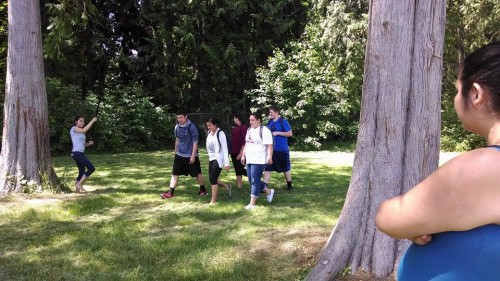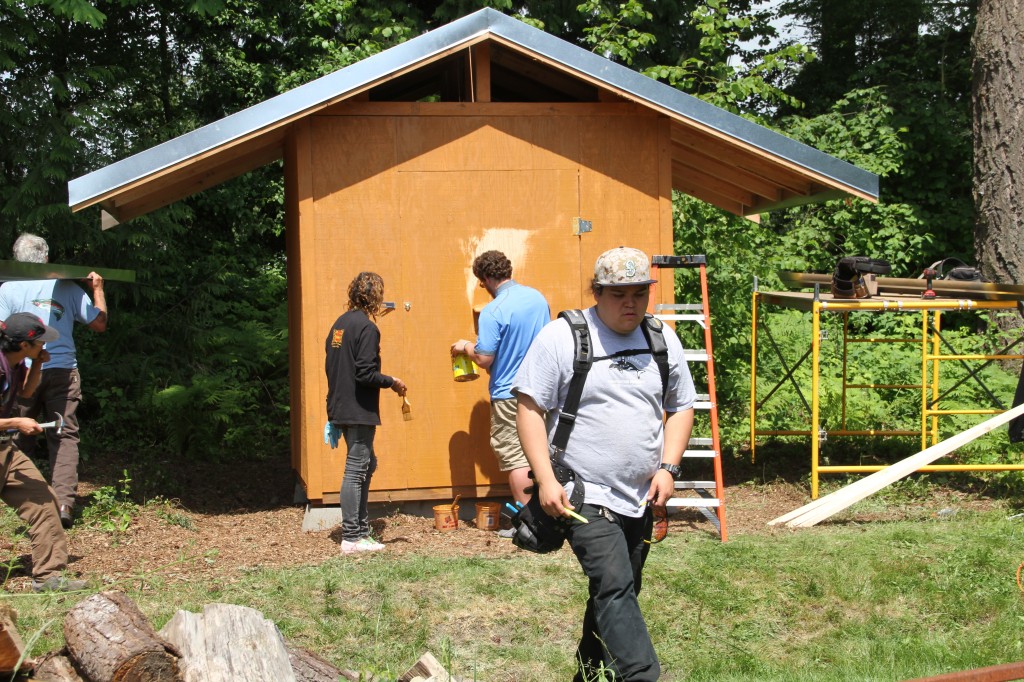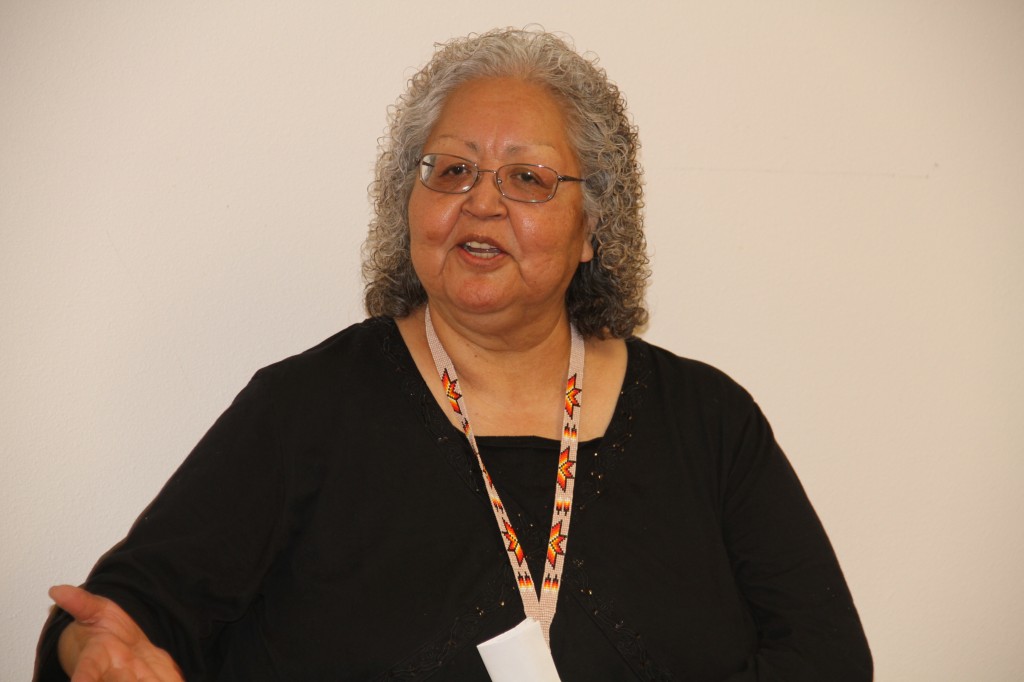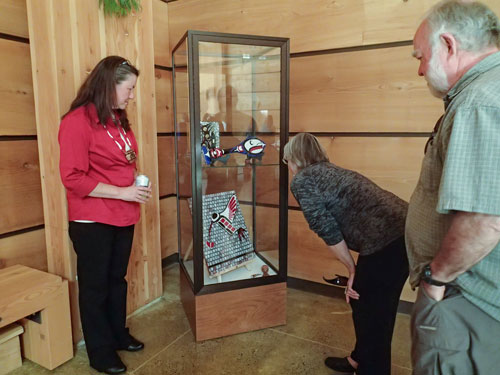
Photo/ Brandi N. Montreuil, Tulalip News
By Brandi N. Montreuil, Tulalip News
TULALIP – Quiet on set. Camera frame. Speed. Mark it. Action!

Photo/ Brandi N. Montreuil, Tulalip News
Tulalip Heritage High School students recently held their filmmaking debut on Friday, June 13, with a little help from Tulalip TV, subsidiary of Tulalip Tribes Communications. Through a unique collaboration between Heritage High School and Tulalip TV, multi-media students received a crash course on film production to produce a short film titled, “Lady of the Woods.”
The project, created by Heritage principal Shelly Lacy and Heritage teacher Cerissa Gobin, required students to not only learn pre and post- film production and editing, but also to create a script and act it out.
“A lot of times, as viewers, we don’t think about how a movie comes together,” said Niki Cleary, Tulalip Tribes Communications Director. “This gave our youth a chance to see that it doesn’t happen all at once from start to finish. They had the fun experience of shooting scenes out of sequence. The scenes, which happen one right after another in the movie, were shot on different days. Unfortunately, the students forgot to wear the same clothing, which made for some continuity issues, but really helped them learn some of the basic principles

Photo/ Brandi N. Montreuil, Tulalip News
of movie production.”
The short film, which started off initially as a game show in brain storming sessions, provided students the entire film production process on a limited schedule. This included learning filmmaking terminology, which to untrained ears, sounds a lot like random dialogue being yelled out by the director from behind the camera. Roll camera. Tilt. Speed frame. Fade in.
“I am very happy with what we were able to accomplish in such a short period of time,” said Brian Berry, director of video for Tulalip TV, who worked with students throughout the filming. “We all knew that we were working against the clock, and that was one of the skills that the students learned, time management with regard to productions. We saw a lot of interest from many of the students and we hope this spark will ignite a growing base of students who want to continue with this type of study and possibly career path.”
That’s a wrap. As part of the filmmaking process, students debuted “Lady in the Woods” to underclassmen during the last days of school completing their filmmaking process.
“The student participation has been amazing. Although listening to the lecture portion of class was tough, they really engaged once they got hands on with the equipment,” said Cleary. “Ultimately, we hope to train the Heritage students to the point that they are able to cover Heritage Sports with a student staffed video crew. The skills they learn can also be used to

Photo/ Brandi N. Montreuil, Tulalip News
produce a Heritage news program, public service announcements or any number of exciting video projects. We hope that the students who learn video skills at Heritage will be the next generation of Communications Department employees.”
Brandi N. Montreuil: 360-913-5402; bmontreuil@tulalipnews.com




















































